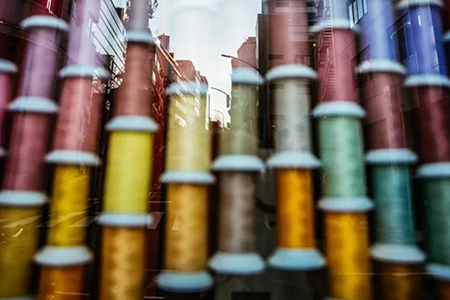

An ambitious vision for man-made cellulosic fibres (MMCF), Such as viscose, modal and lyocell, to make a more sustainable textile business was summarized in a new report from two global sustainability non-profits – Forum for the Future and Textile Exchange.
Entitled ‘MMCF 30: Envisioning the Future of Man-Made Cellulosic Fibres’, it states these fibres have”enormous untapped potential” for building resilience in the worldwide textile market.
The report points out that MMCF is your second biggest Cellulosic fibre class after cotton and states it could lead to realising circular fashion, regenerating ecosystems, supplying vital carbon dioxide, and raising community resilience and prosperity.
Based on consultations with 80 stakeholders from 100 organisations Across the industry, it aims to build on current standards and industry initiatives to address environmental and social issues.
MMCF 2030 lays five Important areas for action to help move the industry forward at the speed and scale necessary:
Regenerating ecosystems – restoring natural ecosystems, ensuring a carbon negative value chain, and regenerative landscape approaches
Producing without harm – handling chemicals and other inputs, zero emissions and closed-loop production systems
Enabling circular techniques – designing, incentivising and implementing circular value chains and zero waste
Creating prosperity – dispersing economic value equitably, applying living wage and equality, universal access to education and healthcare
Upholding rights – community empowerment and related access rights, protecting the rights of people, indigenous peoples and other communities
The vision sets out the actions required to deliver the ambition Within each of the five areas, as well as comment on where challenges Have to be overcome and the critical enabling factors needed to get delivery.
Launched with the COVID-19 War hitting the MMCF sector, the backers of the shared vision hope It’s Going to be a guiding Star for the business as it intends to build business resilience and reduce The likelihood of future disruptions.
Social and environmental challenges, such as deforestation, compound Use and labour rights. The current COVID-19 catastrophe is intensifying these challenges.
“While progress has been made on traceability, innovation and sourcing clinic, opportunities for deeper, systemic change are being lost in the absence of a holistic approach to addressing these untoward challenges within the full value chain.
Sector, the MMCF industry could lead to the conversion of the apparel and textile industry, in addition, to create a positive contribution to other businesses that offer this versatile fibre. We now invite actors from across the industry to explore how they will work together to attain this vision.”
The eyesight with its five components and enablers will be taken forward by the industry and facilitated through the Textile Exchange’s MMCF Round Table forum.
Industry stakeholders will convene in early November to provide updates On progress and identify the critical innovation areas that have to be taken forward.
Textile Exchange managing director LaRhea Pepper stated:”Textile Exchange has seen the business make great strides in our nearly twenty decades of operation, but we now know it still has a long way to go. 2020 is kicking off a decade of change and the launch of the MMCF Vision is a large driver of the change that’s necessary!
“Collective, connected activity accomplishes more than any organisation Can perform alone and is why we convene the textile and apparel community within a pre-competitive, fibre-specific space. Help us achieve the MMCF Vision — join us at the next MMCF Round Table.”
The year-long Procedure to build the vision was financed by Japanese Chemical firm Asahi Kasei along with the Partnership for Sustainable Textiles initiative. It was also supported by brands Target and C&A.
Circulose has entered a strategic partnership with Tangshan Sanyou Chemical Fiber, marking a major step toward the commercialization and scaling…
LebaTex has launched a new faux leather collection featuring over 100 unique colors and textures, including polyurethane, vinyl, and silicone…
Gabriela Hearst has introduced eco-friendly sneaker line, named "Ohio," made from 30% recycled materials, reflecting the brand’s commitment to sustainability.
Oysho, the sportswear and leisurewear brand, has collaborated with Fulgar to introduce a new eco-friendly activewear collection made with Q-Cycle…
Autoneum has developed E-Fiber flame shields for electric vehicles, which stand out for their high-temperature resistance, lightweight structure and durability.
McLaren has introduced a world-first innovation in supercar engineering, Automated Rapid Tape (ART) carbon fibre redefining performance while reducing waste.